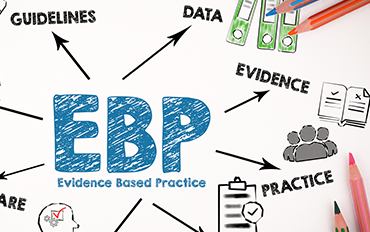
At the recent AAMFT Leadership symposium, one of the speakers implored the audience, “This is not a time to stand on the sidelines; get involved!” I want to add to this important admonition and say that we need to get involved and we need to spend our time prioritizing those things that are most important.
Given everything that has occurred in our world over the last decade—e.g., deep political polarization, the rise in mental health symptoms, ongoing wars, senseless gun violence—more than ever, we need systemic thinkers working on the issues of our day. What we bring to the table is of high value, and many problems can be reduced by inserting systemic thinking into the polarities that are everywhere. While we have made significant strides as a field since our inception, we are still not at the stature nationally we need to be; the work that lies ahead is plentiful.
As one of the youngest mental health professions, we are behind other mental health professions when it comes to having an equal seat at the table. To rectify this point alone will take a full court press from all LMFTs, but if all were engaged, we would be a much more powerful force to be reckoned with. The problem is that not all LMFTs are engaged and those who do engage are not always focusing their energies on the right priorities.
Our research strongly suggests that what we have to offer is as good, if not better, when compared to other mental health professions. Our training model, which includes direct client contact with couples, families, and larger systems, is at the leading edge of clinical training. Our supervision model with highly credentialed approved supervisors is the best. Our clinicians are well-equipped and are practicing therapy approaches with strong research evidence. We are collectively in a very strong position as a field offering outstanding clinical work with thousands of client systems.
However, it is also a time to aggressively push ahead as a field as we continue to secure our influence in the marketplace. The AAMFT strategic plan lays out our priorities, and when you get involved, I urge you to pick one or more of these priorities as a place to spend your time and energy.
Priority #1: Vigorously advocating for the profession and practice of Marriage and Family Therapy.
AAMFT is the primary organization that advocates on behalf of family therapists. This is the most important work for our field, and it takes significant time, strategy, and resources. We would not exist as a field if it were not for the many strategic wins we have had over the years, wins that have advanced our profession, and legislative victories in which we fended off hostile parties, such as our win in the American Medical Association lawsuit defending our right as MFTs to diagnose. Our recent inclusion in Medicare was the most significant advocacy accomplishment for our field over the last decade. This inclusion helped us to achieve our strategic goal of advancing the influence, recognition, and parity of Marriage and Family Therapy and systemic clinical practice across health care environments. We are much more of a player at the mental health provider table because of this accomplishment, having the full recognition of the federal government. However, significant work remains in our advocacy journey.
What can you do?
- Join and be involved in the AAMFT Family Team. Follow current advocacy issues and help advocacy efforts in your state.
- Enroll as a Medicare provider. I cannot emphasize enough how important it is for LMFTs to sign up for Medicare. Even though we are now recognized in Medicare, we have work to do to enroll as Medicare providers. Our influence will be much greater if we have a high number of LMFTs who are Medicare providers. LMFTs must have significant numbers in Medicare enrollment to help our voice and influence remain strong within important federal systems. Even if Medicare work is a minimal part of your practice, please still enroll. Your participation will help. While there have been some challenges in signing up for Medicare based on different state requirements, AAMFT staff have been available and supportive to members in working through these challenges. Learn more about signing up for Medicare.
- Make a financial donation. I challenge each LMFT to donate the equivalent of one clinical session a year to MFT advocacy. If all 70,000+ LMFTs donated $100 a year, we would have more than $7 million to dedicate to advocacy efforts each year. This is not an insignificant amount and would boost our advocacy efforts in large ways. Here is a link to donate: to either the Practice Protection Fund or to Portability efforts — https://givebutter.com/theAAMFT
Priority #2: Advancing in the practices of systemic relational therapies, research, education, and clinical training.
This area is one in which there are numerous legitimate and many wannabe competitors. AAMFT is leading the way when it comes to systemic therapies, but we have to keep innovating and producing relevant material that advances our practice. Our topical interest networks are doing great work in advancing communities of interest on clinical practice topics. I was excited to hear about the recent launch of the Neurodiversity Topical Interest network, a group fulfilling a key niche in clinical practice. Another very current example are the gender-affirming care clinical guidelines produced by the QTAN Topical Interest network, guidelines that fulfill a key need in providing systemic content to therapists working with populations where gender-affirming care is a clinical need. These networks and their achievements help us to achieve a key strategic goal: AAMFT will enhance its capacity to define, disseminate, and maintain high standards related to research, education, and training in Marriage and Family Therapy and systemic clinical practice. Topical interest networks are groups where there are numerous opportunities to engage either as a leader, a member, or a key contributor.
What can you do?
- Join one or more Topical Interest Networks – you can see the full list here.
- Get involved in interest network leadership, programs, or content development. These are all opportunities where help is needed.
- Share your systemic knowledge by contributing an article to Family Therapy magazine, the Journal of Marital and Family Therapy, the AAMFT Systemic Insights page in Psychology Today, and the AAMFT Blog.
- Share thoughts on your social media to highlight how systemic therapy is better.
Priority #3: Building communities of systemic relational thinkers, therapists, teachers, and scholars.
I personally have communities of interest where I receive support, encouragement, and where I learn from peers. I believe that this is one of the most valuable priorities for us as LMFTs, and it is also one to which each of us can participate and contribute. One of the key identities I have is as a systemic therapy researcher. Research is a team process that requires the assistance of numerous others. It can also be an isolating experience. Researchers must be able to rub shoulders with each other and learn from each other. That is why I am a member of the Intervention Research In Systemic Family Therapy Topical Interest Network, an AAMFT network that exists specifically with the following aim in mind: “To create a community of Systemic Family Therapy researchers through online networking and research conferences, and to disseminate research findings to therapists, policy makers, and the public in order to inform policy related to healthcare and mental healthcare.” Even though this group has only been in existence for a short time, they are already hosting their fifth annual conference, have several awards set up, and have dynamic newsletters. The workshops offered through this TIN are exciting and innovative. You can review their newsletters here and here. This is one example of many practice communities that exist through AAMFT networks. I encourage you to get involved.
What can you do?
- Join an AAMFT Interest Network to connect with other MFTs that share your interests
- Commit to engage in the network—connect with other members, share systemic resources, attend webinars or conferences, volunteer, or engage in leadership to help drive strategic direction.
Priority #4: Engaging in strategic partnerships with leaders in the mental health field and policymakers for a healthier, just, and equitable society in the U.S. and the world.
This is a top priority for us and requires collaboration at both the local and national levels.
One of our key current priorities is licensure portability, which aligns with our broader strategic goal to lead the expansion of portability, technology, and entrepreneurial applications that enhance access to quality, systemic mental health care. Achieving this vision requires dedicated efforts from AAMFT national staff and our members working in communities nationwide.
Improving licensure portability means removing unnecessary and burdensome barriers that prevent Licensed Marriage and Family Therapists (LMFTs) from practicing across state lines. This is critical for ensuring clients maintain access to care when they move and that LMFTs can serve where they are most needed.
A recent success story comes from Arkansas, the first state in 2025, to sign an Access MFTs portability bill into law. AAMFT staff collaborated with state lobbyists and coordinated testimony from local AAMFT members. Two members, Dr. Kelly Roberts and Dr. Becky Whetstone, traveled to Little Rock to testify in support of HB 1187, which passed quickly through the legislature and was signed into law by the governor. Once implemented, this law will allow LMFTs in good standing from other states to apply for licensure in Arkansas using their existing credentials.
The Access MFTs initiative also supports broader licensure portability efforts from other entities. For example, earlier this year, the Governor of West Virginia introduced a comprehensive portability bill benefiting multiple professions, including LMFTs. AAMFT member Ashley Niemann played a key role by speaking with legislators in support of the bill, which was ultimately signed into law.
To continue this momentum, we need LMFTs across the country actively engaging with policymakers, advocates, insurers, and other key stakeholders. These relationships are essential to achieving our goals.
What can you do?
- Join the Family TEAM
Stay up to date on key issues and challenges facing MFTs and become part of a national advocacy network. - Earn Your Advocacy Certificate
Take AAMFT’s new 2 CE Advocacy Certificate Program to learn or refresh essential advocacy skills. Share your MFT Advocate digital badge on LinkedIn and other platforms—and encourage your peers to do the same! - Support the Practice Protection Fund
Your donations help fund advocacy efforts across the country, ensuring that MFT voices are heard where it matters most.
Priority #5: Leading Innovation and Advancing Best Practices in Health Associations
At AAMFT, we are committed to being a forward-thinking, world-class professional association. Our fifth strategic priority challenges us to operate at the forefront of innovation and emerging best practices in the association field. Over the past decade, AAMFT has undergone significant transformation to align with cutting-edge standards for professional associations. We actively follow guidance from the American Society of Association Executives (ASAE), whose research and leadership have been instrumental in shaping our progress.
One of our most impactful efforts has been the integration of Diversity, Equity, and Inclusion (DEI) into every layer of our organization. This isn’t just an initiative—it’s a core value. From membership to leadership pathways, and across our networks and programs, we are building an inclusive and equitable association that reflects the rich diversity of our members and the clients they serve. This work is essential not only to our identity but to our effectiveness in supporting culturally responsive, systemic care in every community.
Staying on the leading edge means committing to continuous learning and bold, values-driven action. It means building an association that evolves with its members and the world around us.
What can you do?
- Engage with AAMFT initiatives—participate, contribute, and help us grow together.
- Be an inclusive leader—foster belonging, share your perspectives, and champion equitable practices in your networks.
- Share your insights—got a bold idea or a fresh perspective? Reach out to President Blow or CEO Michaels to help shape AAMFT’s future.
- Stay informed, get involved, and amplify our message—attend events, volunteer, and share AAMFT initiatives through your professional networks and social media. Help us spread the word about our work and values.
In summary, we have reached a moment where we have achieved many great things for our field—research evidence for what we do, great clinical training, and excellent supervision. However, we need to use these opportunities to strengthen the stature of our field. It starts with full engagement from all our members—either in donating your time, your skills, or your resources. It is not enough to sit on the sidelines and applaud the efforts of others. Get involved and be sure you are involved in the right priorities. I am excited for our future.


